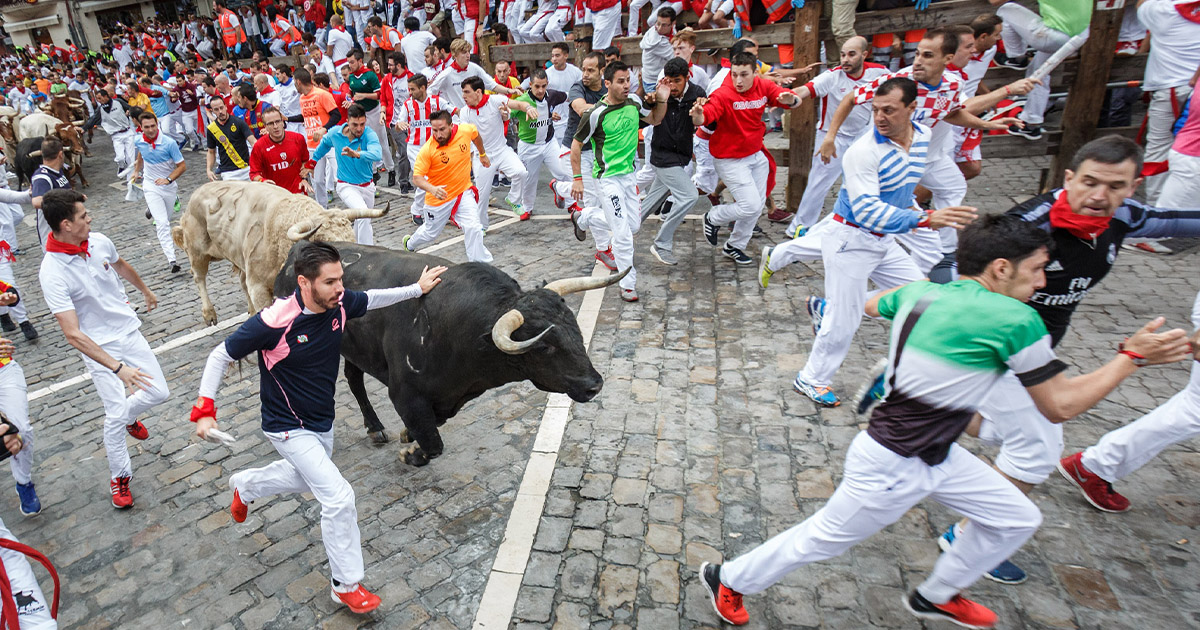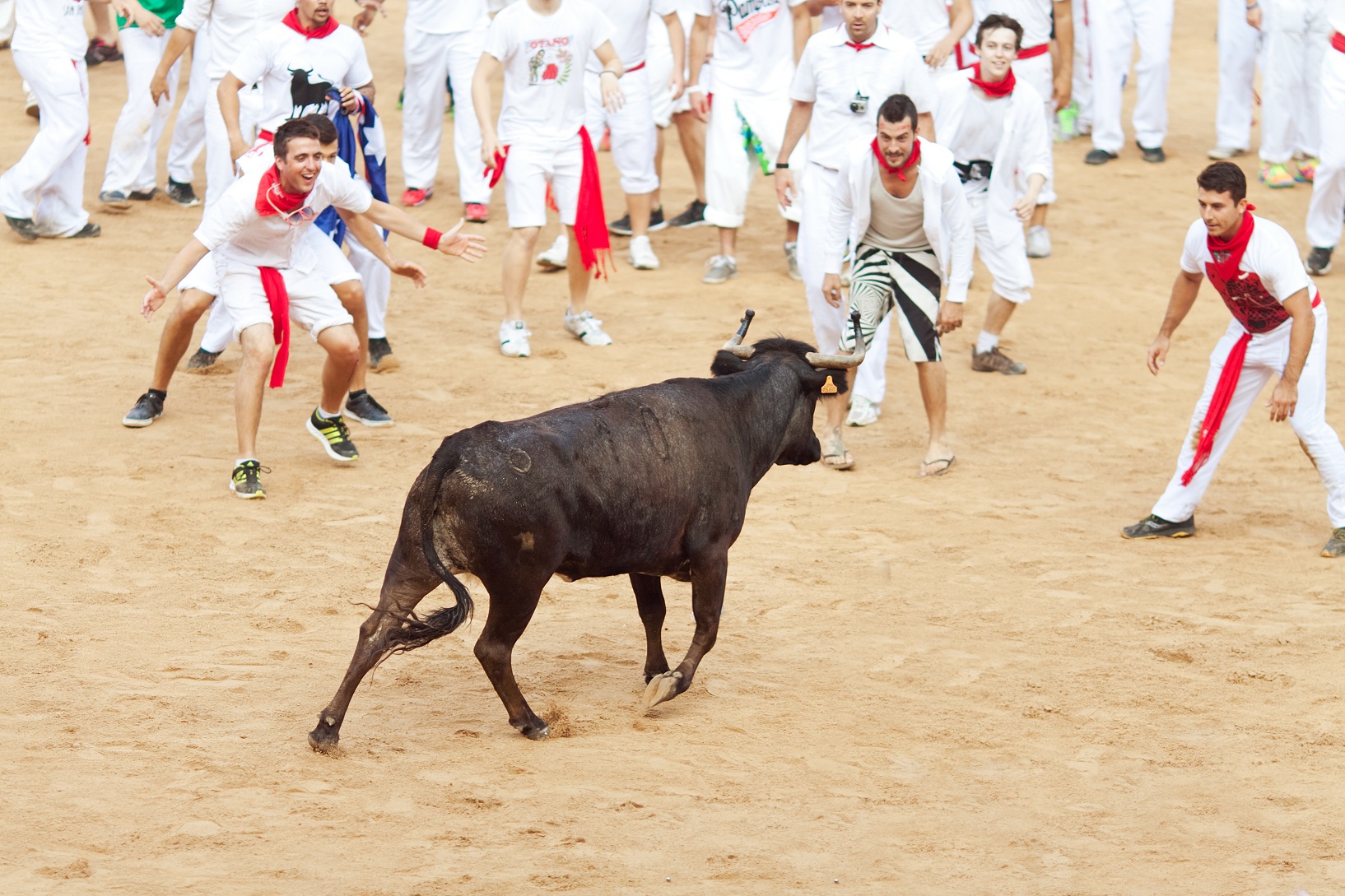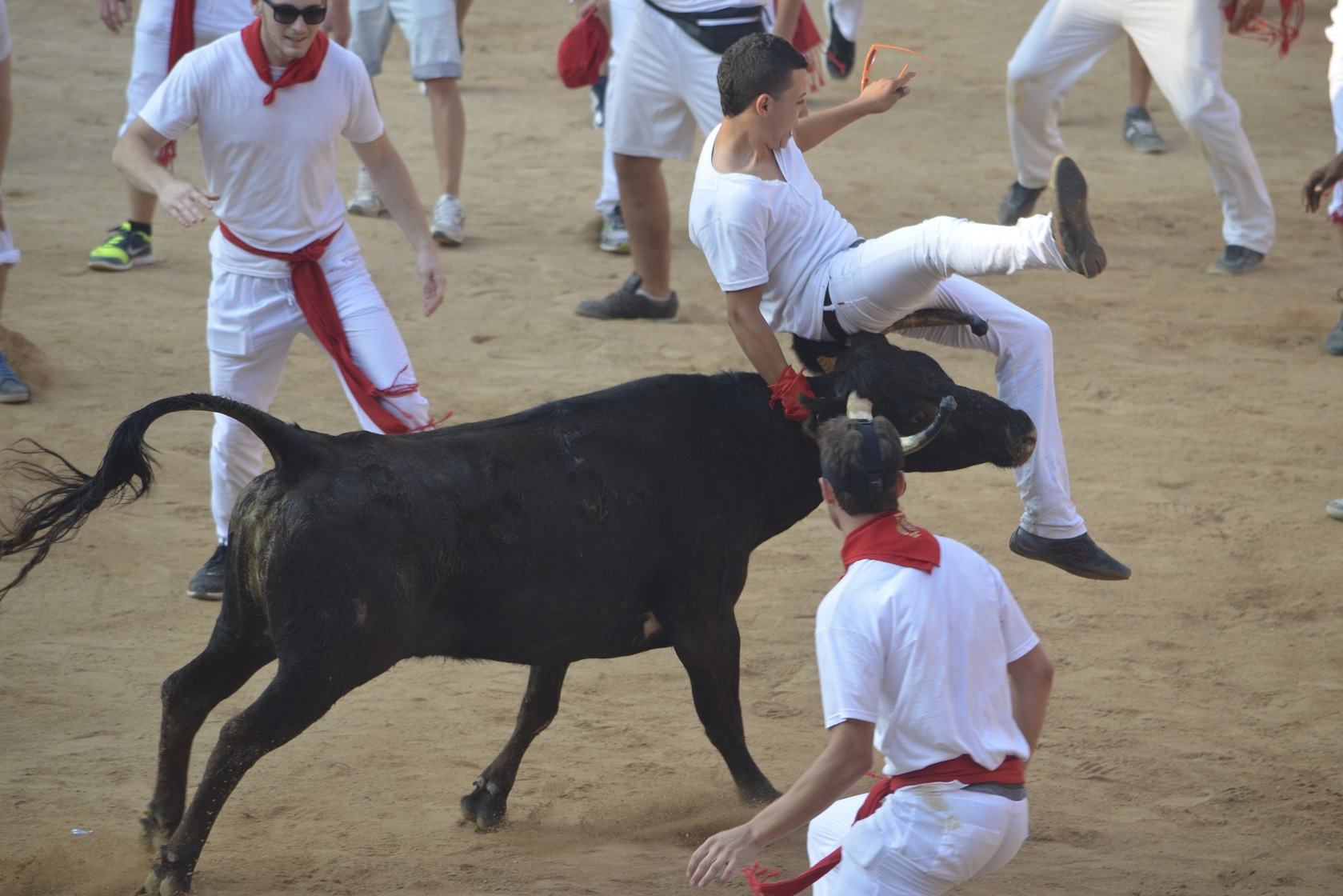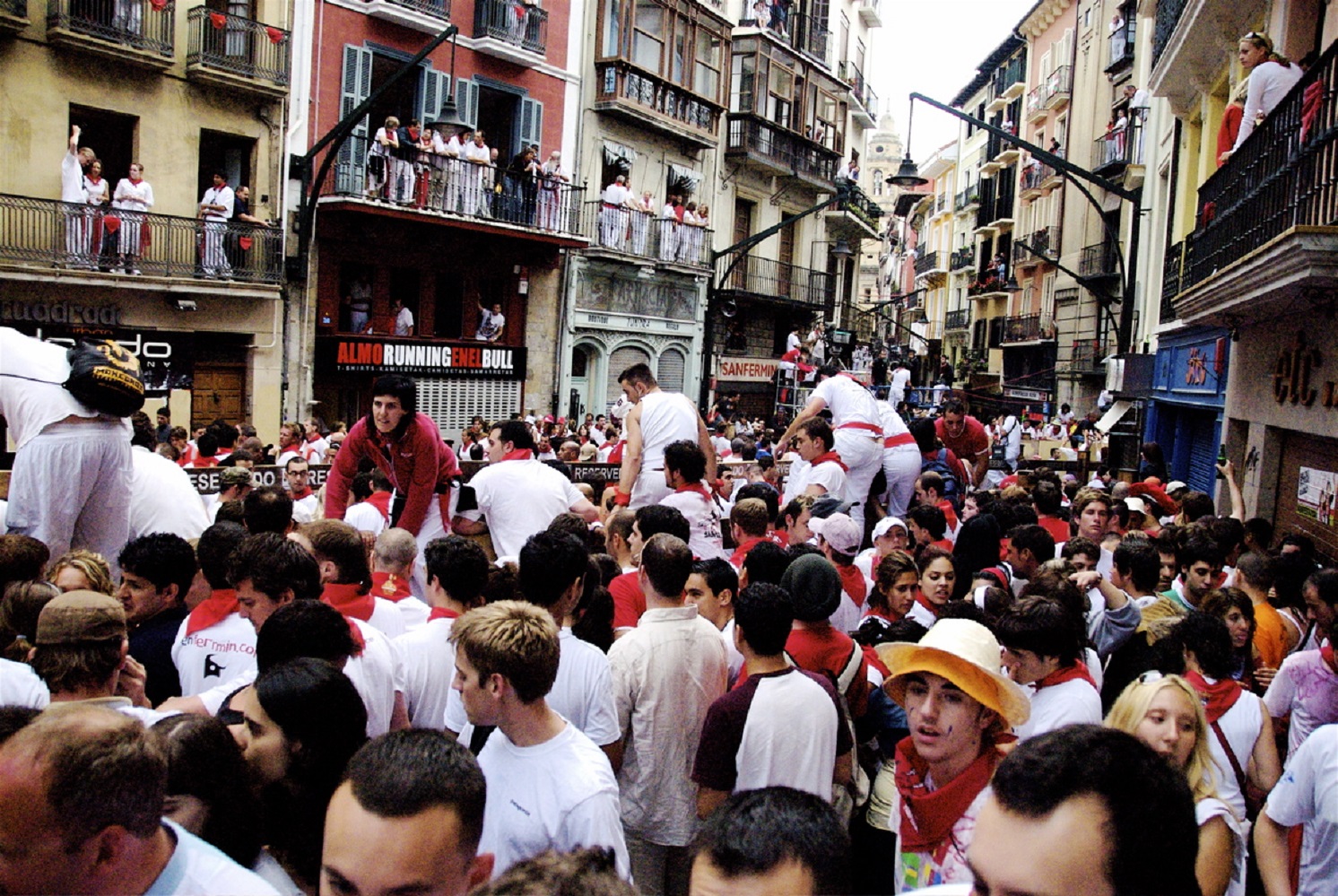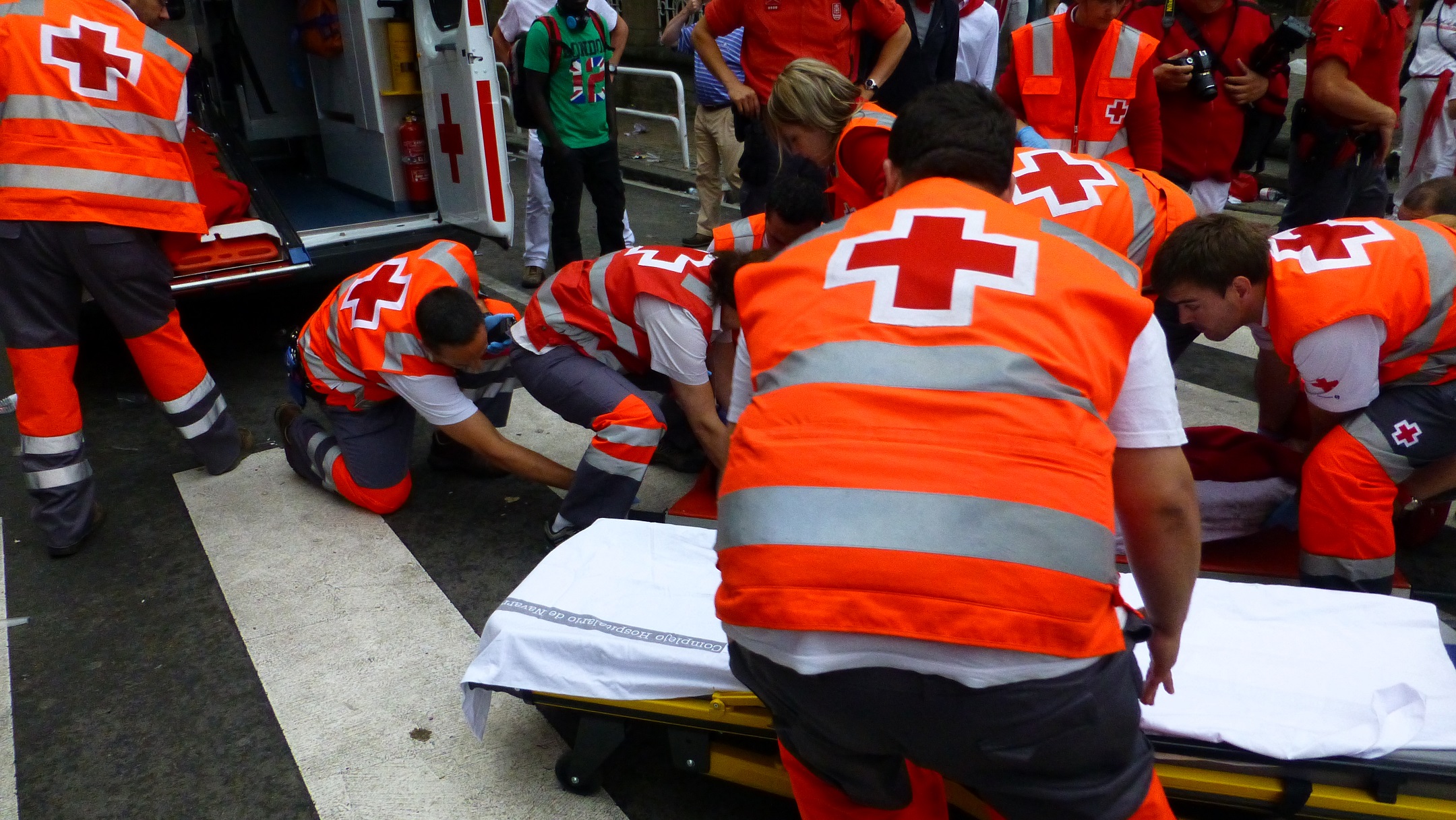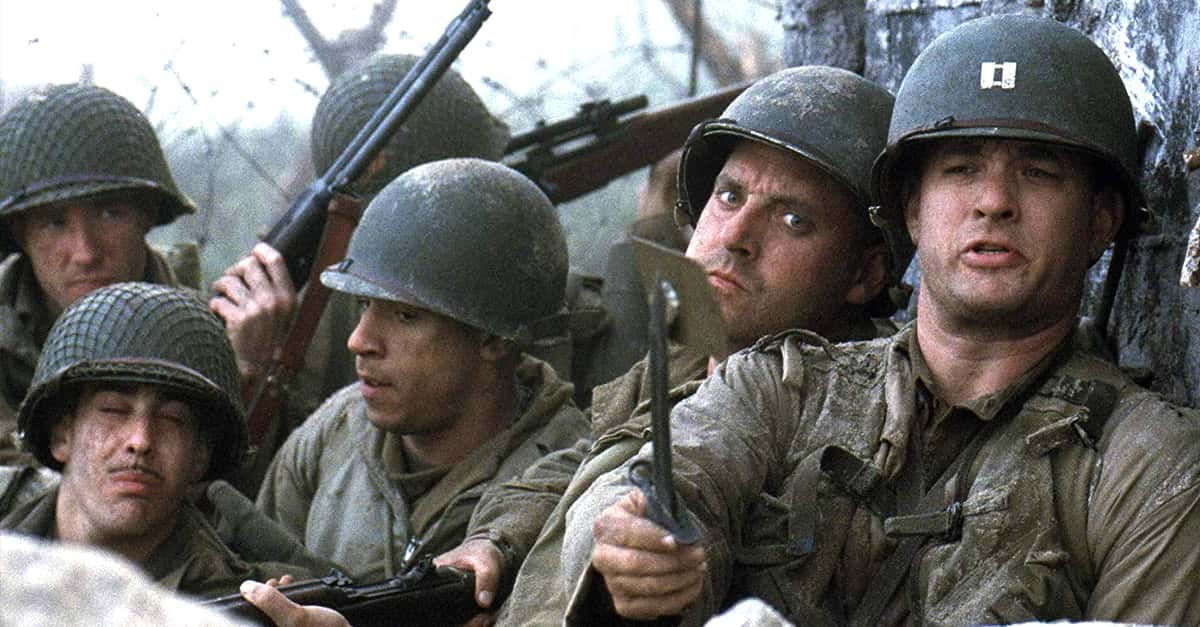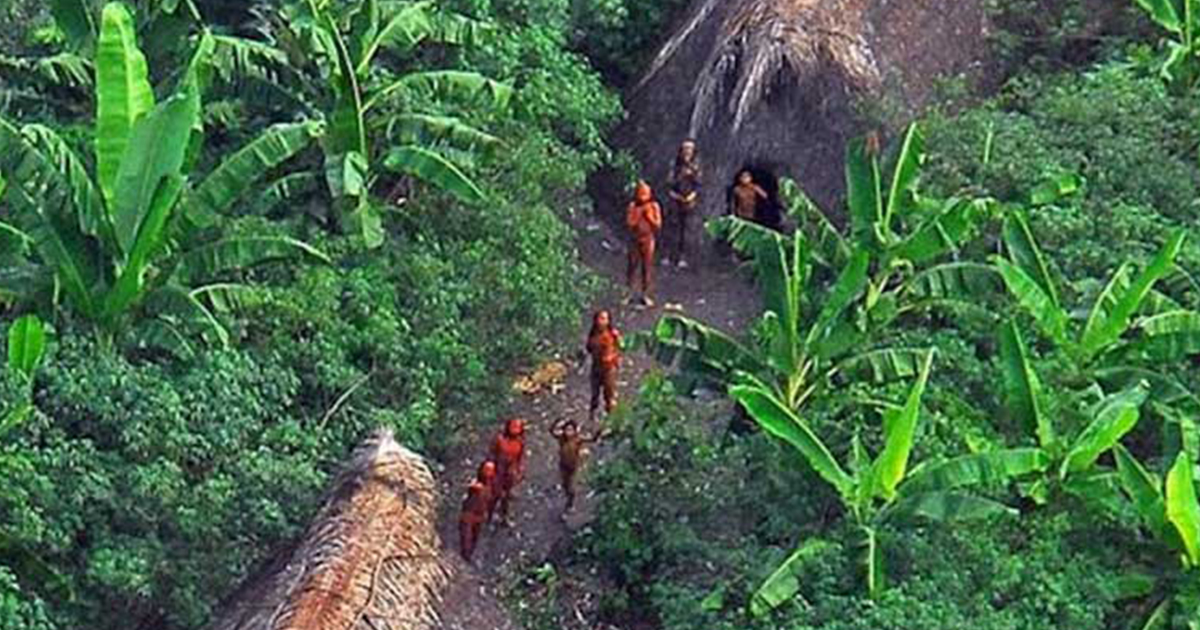Welcome To The Running Of The Bulls
When it comes to wild attractions for your travel bucket list, few are as thrilling as the Running of the Bulls. This exciting Spanish tradition draws in millions of spectators each year—let’s see why it’s got everyone raving!

Where Is It?
Bull runs are held in villages throughout Spain and Portugal. There are also some runs in Mexican towns and in the Occitan region of France.
However, when most people imagine the running of the bulls, the festival in Pamplona, Spain is what comes to mind.
 imagestockdesign, Shutterstock
imagestockdesign, Shutterstock
The Pamplona Running Of The Bulls
Called an encierro, meaning “to corral”, the Pamplona bull run is one of the most striking aspects of the San Fermin Festival, which occurs every year from July 6th to 14th.
According to the legends, Saint Fermin was a priest who met his end by being dragged to death. He is considered a Catholic martyr and is also one of the patron saints of the city.
 Infrogmation of New Orleans, CC BY-SA 3.0, Wikimedia Commons
Infrogmation of New Orleans, CC BY-SA 3.0, Wikimedia Commons
How Many Bulls Are There?
During the encierro, six to ten bulls are let loose to chase after a crowd of people. The streets are sectioned off, which creates a designated path for the bulls to run through.
At the end of the path is the bullring, where the event concludes with a bullfight.
 Atkins525, CC BY-SA 4.0, Wikimedia Commons
Atkins525, CC BY-SA 4.0, Wikimedia Commons
Breeding Matters
Not just any bull can be part of the encierro. Only certain breeds are chosen to be part of the bull run, like the Spanish toro bravo.
This breed is often used in the bullfighting that happens after the encierro, and they’re chosen for their strength and aggressive nature.
The Origins Of Bull Running
While the encierro is now part of the San Fermin festival, its origins lie with Spanish cattle herders.
In the early 14th century, cattle herders in the northeast of Spain needed a way to move their animals from the countryside into the city where they could be sold at market or used for breeding.
By setting up fences, they could corral all the bulls and guide them to where they need to go.
 Siempremolinicos, Wikimedia Commons
Siempremolinicos, Wikimedia Commons
The Origins Of Bull Running (cont’d)
To get the cattle to move faster, the men would try to excite or scare the animals. Over time, it turned into a competition to see who could get their bulls to the pens the fastest.
Some young men took it a step further, and tried to race in front of the bulls, leading to the tradition that we know today.
 Raymond Forget, CC BY-SA 4.0, Wikimedia Commons
Raymond Forget, CC BY-SA 4.0, Wikimedia Commons
How Many People Attend?
The bull run in Pamplona is one of Spain’s biggest attractions. Each year, 2,000 people participate in the running of the bulls, while another million watch the event via television broadcasts.
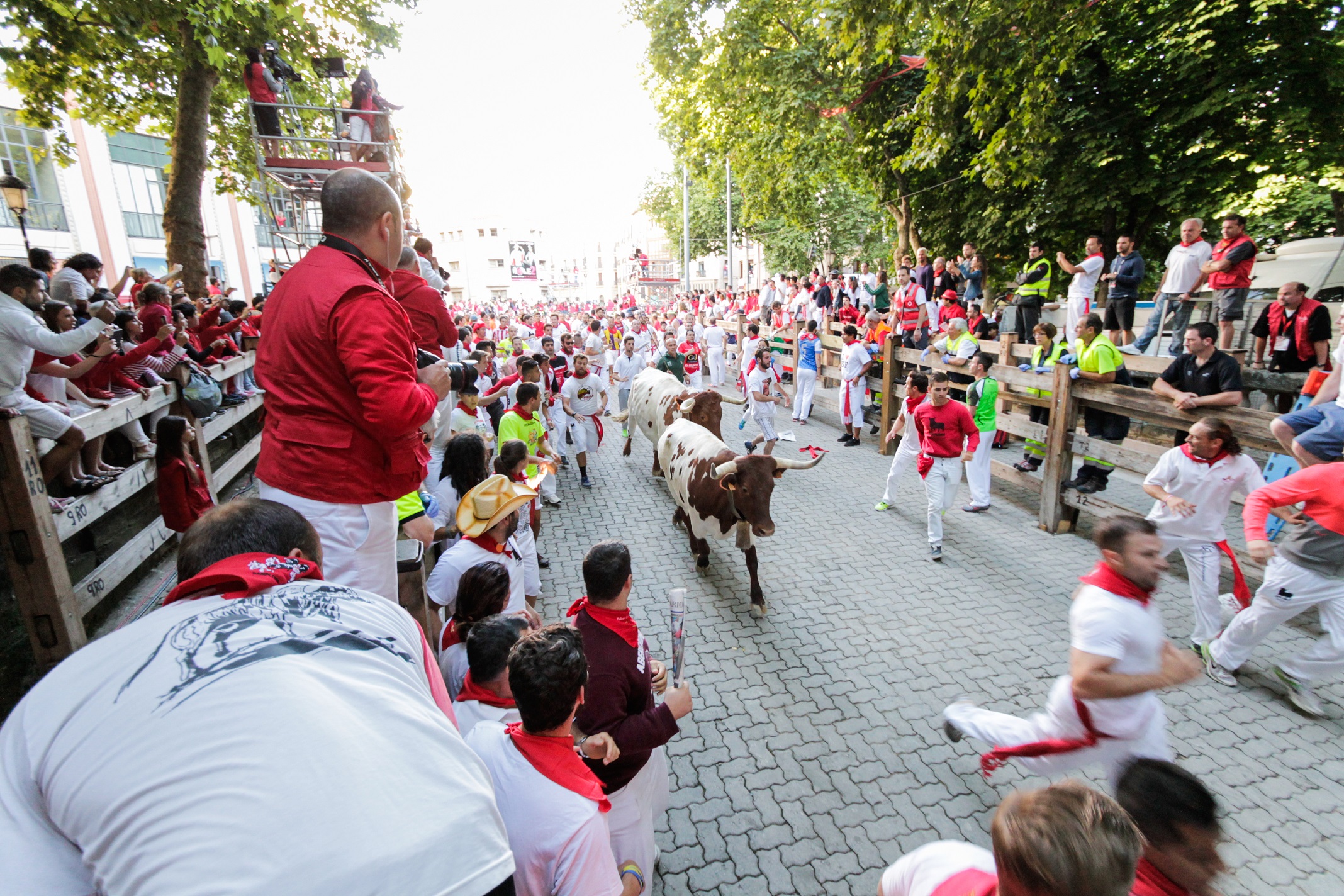 imagestockdesign, Shutterstock
imagestockdesign, Shutterstock
Who Can Join The Running?
Prior to 1974, only men were allowed participate in the encierro, but now it’s open to everyone. As long as they get there before 8 am, when the running starts, anyone is free to join in.
The Rules Of The Running
There are only a few rules: runners must be at least 18 years old, must run in the same direction of the bulls, cannot excite the bulls, cannot wear flip-flops or high heels, and cannot be under the influence of alcohol or other substances.
 imagestockdesign, Shutterstock
imagestockdesign, Shutterstock
The Fences
In Pamplona, the bulls are guided through the streets by a series of wooden fences. The fences block the bulls from running down side streets and have gaps that are big enough for people to slip through but too narrow for the bulls.
All in all, more than 3,000 pieces of wood are used to make the fences.
 imagestockdesign, Shutterstock
imagestockdesign, Shutterstock
The Benediction
Before the running begins, the runners sing a benediction, or prayer, at the statue of Saint Fermin. It is sung three times, in Spanish and Basque.
The runners ask for the saint to protect them and give them his blessing as they make their way through the encierro.
 San Fermin Pamplona Navarra from España, Wikimedia Commons
San Fermin Pamplona Navarra from España, Wikimedia Commons
Starting The Run
The encierro starts at 8 am, when a rocket goes off to tell the runners that the bulls’ corral gate has been opened.
A few minutes later, a second rocket signals that all the bulls have been released and are on the run.
The End Of The Run
Towards the end of the run, a third rocket will announce that the bulls have entered the bullring, while a fourth and final rocket signals that the animals have been corralled.
All in all, the encierro only lasts about three minutes.
The Bulls
The six bulls that run in the encierro are usually the ones to be fought at the end of the festival. During the encierro, the bulls are accompanied by six steers (castrated bulls).
Leading up to the festival, the steers run the encierro route daily, so they can help guide the bulls to the bullring during the event.
The Route
The encierro route goes through four streets in the old part of Pamplona. To total length of the route is 875 meters (957 yards), and runners are prohibited from joining in the first 50 meters of the run, as that’s when the bulls are fastest.
The average speed of the herd is about 24 km/h (15 mph).
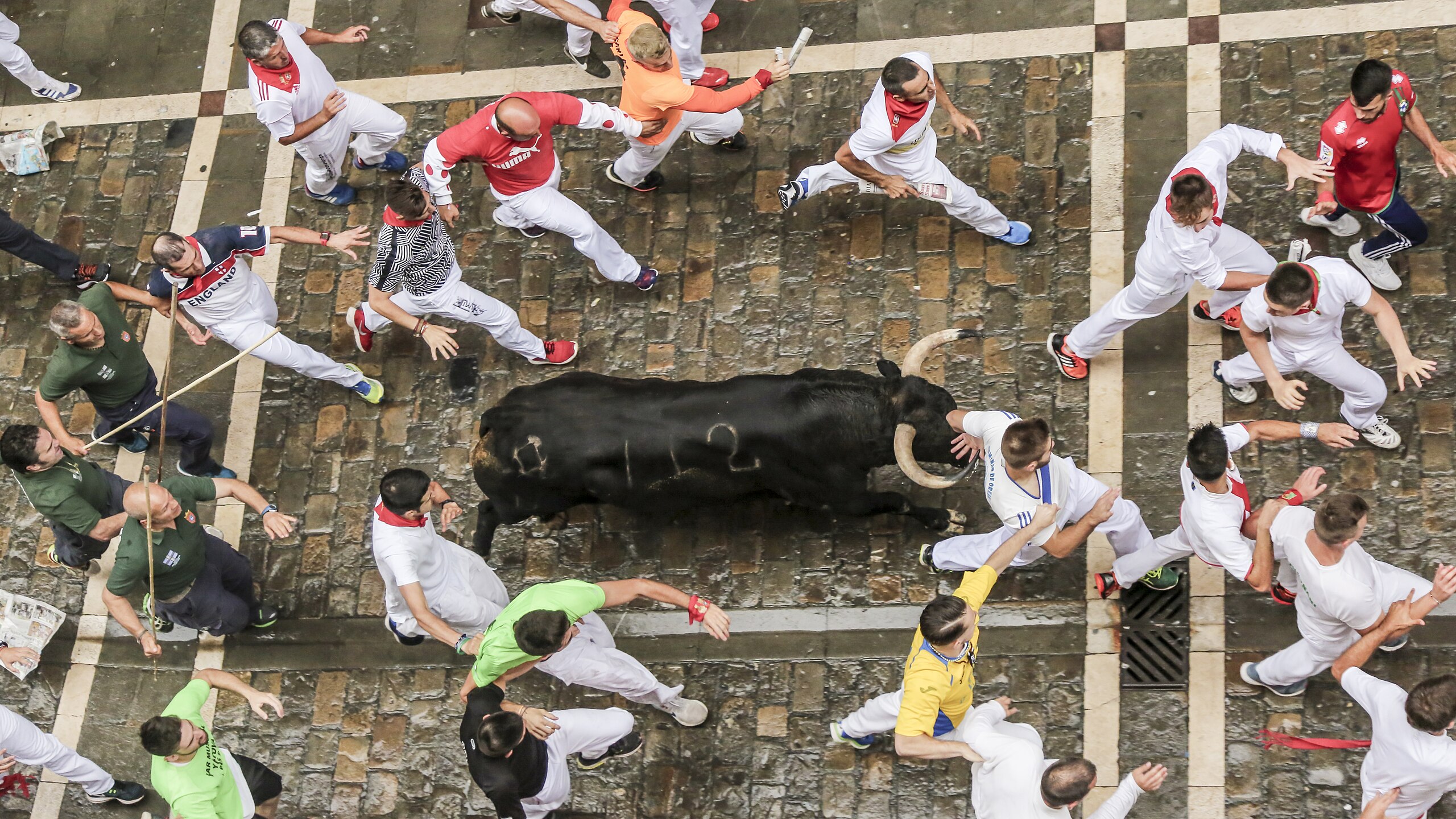 San Fermin Pamplona Navarra from España, Wikimedia Commons
San Fermin Pamplona Navarra from España, Wikimedia Commons
The Risks Of Running With The Bulls
While injuries during the run do happen, they are usually not life-threatening. Each year, 50 to 100 people get hurt during the run, though most are fine with receiving on-site medical attention, and don’t have to go to the hospital.
Goring
Getting gored by the bulls’ horns is potentially deadly, but luckily isn’t that common during the encierro.
The last time someone got gored at the Pamplona encierro was in 2013, when six runners couldn’t escape the bulls’ horns. Fortunately, they all survived.
Risks From The Crowd
Many might think the bulls are the biggest risk during the encierro, but in reality, you’re more likely to be hurt by other people.
The last street is the narrowest section of the run, since it’s meant to funnel the bulls into the bullring. Crowd rush is a major risk here and has even been fatal.
Risks From The Crowd (cont’d)
A crowd rush happens when runners fall and pile up on each other near the entrance of the bullring. In addition to contusions and broken bones, people can suffocate or get gored if the bulls crash into the crowd.
This kind of crowd rush has happened 10 times in the history of the Pamplona encierro, with the last being in 2013.
Has Anyone Died During The Run?
Since they started keeping records in 1910, 15 people have died during the Pamplona encierro.
One runner suffocated in a crowd rush in 1977, while all the others were gored. The last fatality occurred in 2009.
Treating The Injured
For those that do get injured during the running of the bulls, help is always nearby. About 200 volunteers provide medical attention during the encierro, and there are 16 medical posts spread out about every 50 meters through the run.
 imagestockdesign, Shutterstock
imagestockdesign, Shutterstock
Treating The Injured (cont’d)
Each medical post is staffed with a doctor and a nurse, and there are also about 20 ambulances waiting nearby.
This efficient medical setup means that if a goring does happen, the person can be stabilized and transported to the hospital in less than 10 minutes.
The Dress Code
People can wear whatever they want to the encierro, but most choose to wear the traditional outfit: white pants with a red sash around the waist, a white shirt, and red kerchief around their neck.
Nowadays, some people also put bold logos on their shirts, which is thought to help them find themselves in photos of the event.
The Dress Code (cont’d)
The traditional red and white clothing during the Pamplona encierro is meant to honor the martyrdom of Saint Fermin. White represents the saint’s purity and holiness, while the red neckties represent his execution by decapitation.
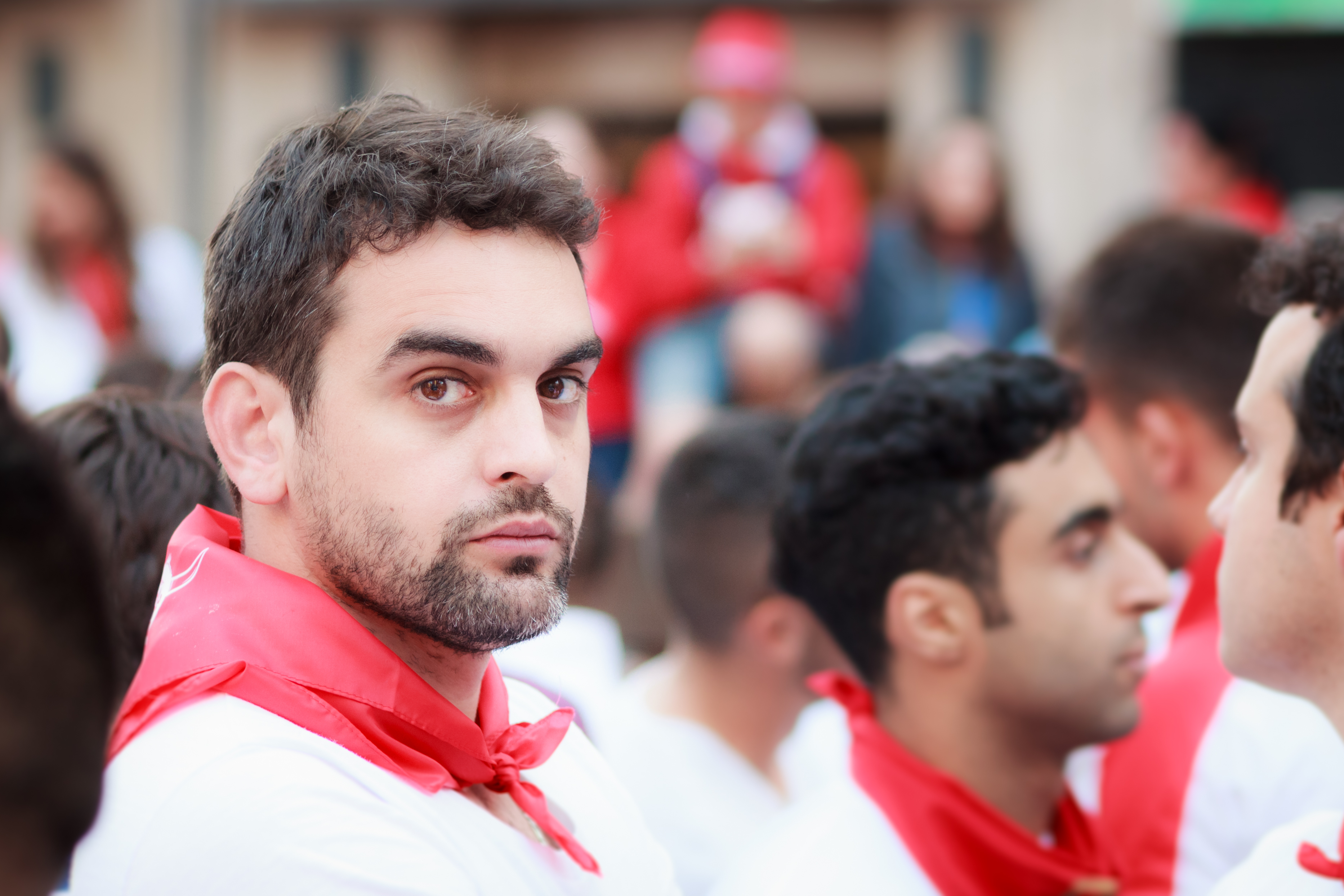 imagestockdesign, Shutterstock
imagestockdesign, Shutterstock
What Happens To The Bulls After?
Once the bulls enter the bullring and are corralled, their part in the festival comes to a somber end.
A bullfighter called a matador will fight each bull individually. This is why only the strongest and most aggressive bulls are chosen for the encierro.
Controversy
Unfortunately, the bull fight ends with the animal’s death. This aspect of the festival has seen much outcry from animal rights organizations and even some tourists who didn’t know this is how the encierro concludes.
But while it may seem cruel to many of us, it remains an important Spanish tradition that few villages have given up.
Why Do They Fight The Bulls?
Historically, bullfighting was a way for poor men to achieve fame and escape poverty.
Similar to boxers in other countries, the best matadors were celebrities in their communities. Some even hailed from families who were known for their generations of bullfighters.
How To Run With The Bulls
Since anyone can join the Pamplona encierro, it has become a major tourist attraction.
If you want to participate, take some time to look up a map of the course, and make sure you’re physically prepared for this dangerous dash.
 imagestockdesign, Shutterstock
imagestockdesign, Shutterstock
How To Watch The Running Of The Bulls
If you’d rather just watch the action, you can stand behind the fences along the encierro route.
Just make sure you get there early so you can find a good spot—it gets very crowded and you’ll want a good view of the run.
How To Watch The Running Of The Bulls (cont’d)
Another great way to watch the encierro is from one of the many balconies overlooking the route.
Many of the balcony apartments along the route are available to be rented by travelers. Storefronts with second-story windows also let people in to watch the event.
 Oleksandr Sadovenko, Shutterstock
Oleksandr Sadovenko, Shutterstock
Final Thoughts
In recent years, the Running of the Bulls has faced scrutiny from animal rights groups, causing some villages to give up their encierros. Yet, despite the danger and controversy, the city of Pamplona continues to uphold this centuries-old tradition. Safe to say this is one unique celebration that's not going away anytime soon, so add it to your travel list and experience the thrill for yourself.

